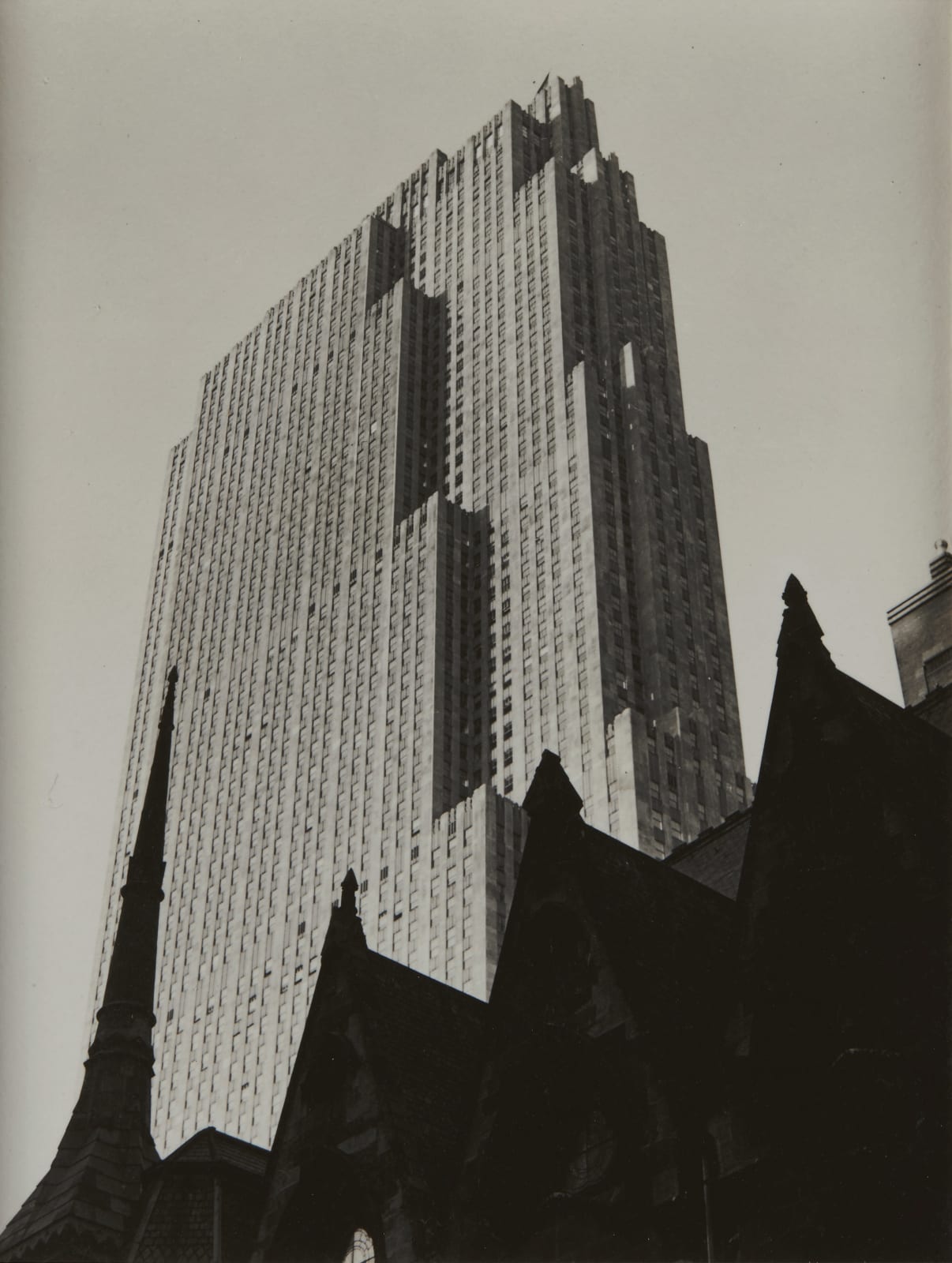
Dorothy Norman American, 1905-1997
Printed by the artist in 1932.
.
3 7/8 x 2 7/8 in
.
Dorothy Norman's "Rockefeller Center and Church, New York, 1932" stands as one of the most significant architectural photographs of the Depression era, capturing a transformative moment in American urban history when the nation's largest private construction project rose from economic devastation.
This vintage gelatin silver print documents Rockefeller Center during its crucial construction phase, when the project employed up to 60,000 workers at a time when two-thirds of New York's construction workforce was unemployed. The photograph serves as visual testimony to American resilience, showing how private enterprise and architectural ambition provided hope during the nation's darkest economic period. Norman's timing was impeccable—capturing the RCA Building (now 30 Rockefeller Plaza) in 1932, the year it opened as the centerpiece of what would become America's most famous urban development.
The photograph demonstrates Norman's mastery of modernist composition under Alfred Stieglitz's mentorship. Her dramatic low-angle perspective transforms the Art Deco skyscraper into a soaring monument, while the repetitive window pattern creates rhythmic vertical lines that emphasize the building's unprecedented scale. This compositional approach reflects the "straight photography" philosophy that Stieglitz championed, emphasizing clarity of vision and emotional authenticity.
The stark juxtaposition between the illuminated modern tower and the dark church silhouettes creates a powerful visual metaphor for the cultural tensions of 1930s America. Norman captures the moment when traditional religious architecture yielded to secular modernist vision, documenting not just buildings but the fundamental shift in American values and identity. This symbolic contrast between sacred and secular architecture resonates as a defining image of America's transition into the modern era.
As part of Norman's intimate documentation of New York's transformation, this work exemplifies her unique approach to architectural photography—treating buildings with the same sensitivity she brought to her renowned portraits of cultural figures like Einstein, Duchamp, and Gandhi. The photograph's importance was recognized in major exhibitions, including the 1993 retrospective "Intimate Visions" at the International Center of Photography.
This image endures as essential visual documentation of American modernization, artistic achievement, and cultural transformation during one of the nation's most challenging periods.